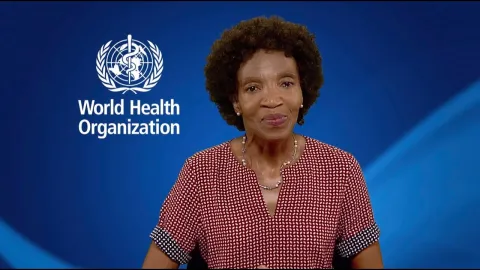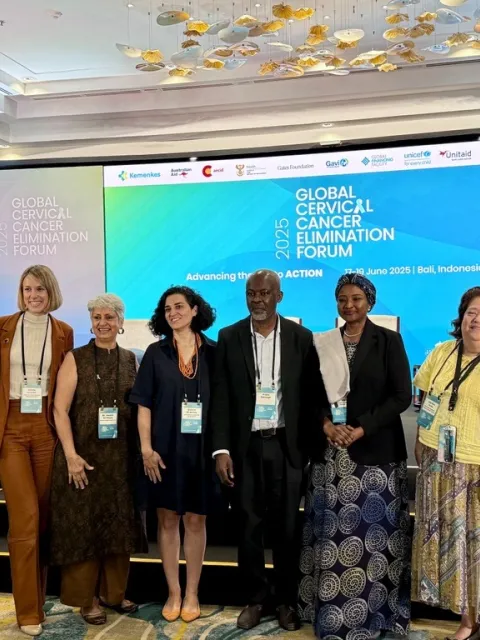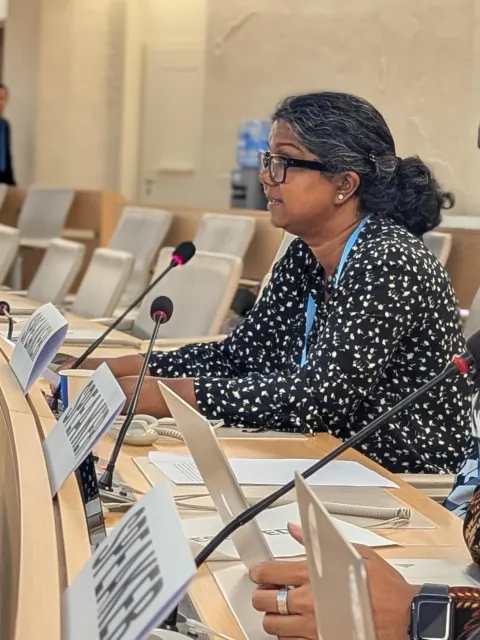Dr Simelela on WHO's Global strategy to eliminate cervical cancer
Dr Princess Nothemba Simelela, Assistant Director-General for Strategic Programmatic Priorities: Cervical Cancer Elimination, offers her insights into the importance of WHO’s Global Strategy and the challenges facing its implementation.

What does the adoption of WHO’s Global Strategy for the elimination of cervical cancer mean for the fight against this particular cancer and against cancer overall?
The value of WHO’s strategy is that it sets a common threshold of no more than four cases of cervical cancer per 100,000 women per year for all countries to work towards. This goal may seem ambitious for some countries; however, the strategy also sets short-term targets for countries, showing them how to get to where they need to be by 2030 and what they should aspire to achieve if they are really committed to the elimination of cervical cancer. Until now, we have only seen in the majority of high-burden countries small-scale opportunistic activities, a call to action here and there, but never such a comprehensive plan. The new global strategy rallies the whole cancer community around this cause, offering a historic chance to eliminate a cancer – indeed a non-communicable disease - for the first time.
What are the next steps to bring the strategy to life and move towards the 90:70:90 targets?
We are facing different regional challenges. The African region obviously carries a huge burden. They have to go out guns blazing on all three fronts to really do the best they can by 2030 and call upon their governments to put women and adolescents at the centre of development. The COVID-19 pandemic has shown how essential health is to development. To secure the future, you've got to build healthy societies – and women and girls are key populations. The cervical cancer elimination agenda will help greatly in doing that.
More advanced countries in terms of implementation will have to deal with the anti-vaccine movement to reach the 90% HPV vaccination target, for example. The screening target is also critical in the early decades on the pathway to elimination, making sure prevention and early detection work well for women who are too old for the prophylactic vaccine. It will be important to develop an implementation framework and WHO is working on that with all of our partners, including the UN agencies, the Global Fund, PEPFAR, UNITAID and other professional societies, as well as with UICC.
The most important message that we are communicating to everybody is to take this forward together, in one united push, and to maintain the momentum.
What are the biggest challenges for the implementation?
Those countries most in need of reducing the incidence of cervical cancer face multiple demands, their health systems have to cope with so many issues. And I am not only talking about the COVID-19 pandemic, which has certainly slowed things down over the past few months, but also with regard to many other communicable and non-communicable diseases. We must find creative ways of helping these countries. WHO colleagues in the different regions are already thinking about new types of support including tele-mentoring and tele-surgery options to help build the capacities that will drive national programmes forward.
I love the idea of self-sampling for the high-precision HPV test, building on platforms that have been created in response to COVID-19. We know now that developing countries can mount a good laboratory infrastructure. Many of the tests that have been used for COVID-19 are not so different from what is needed to test for HPV infections. The advantage of linking this with self-sampling is that women have more choices, they can sample at home and do not have to come in and interface with the health system if this is too complicated, or they can use the self-sample in the clinic and still retain some privacy.
Yes, there are many challenges, but I am encouraged by the support that Member States have shown for the agenda item and the excitement expressed by the opportunity to eliminate a disease that currently kills millions of women worldwide every year.
Which countries can be considered as champions in the fight against cervical cancer and what can others learn from them?
There are always lessons to be learned and WHO has a key role in sharing those successes, but I think we need to be very careful about comparisons. The strategy clearly shows the current inequities in access to prevention, early detection and treatment services, but it's not due to a lack of knowledge that the world has not yet eliminated cervical cancer.
We need to recognise the fact that developing countries, low-income countries are starting at a very disadvantaged position and should be supported to catch up and strengthen their health systems. But be that as it may, there are countries like Zambia, Rwanda and Malawi that are progressing well after 10 years of careful building and they are providing inspiration for peer countries. Among the high-income countries, Australia and the United States are very advanced in the fight against cervical cancer and have made public commitments to reach elimination in the next one to two decades.
We must not lose the message of inequity that this particular cancer exposes – between countries, but also within countries. This is why we need a global movement of solidarity to ensure that we will no longer see a woman die of cervical cancer every two minutes. High-income and developed countries should partner with the developing and low- and middle- income countries, share their knowledge, share their skills, and help everybody move along on this path towards elimination.
How optimistic are you that cervical cancer will eventually be eliminated?
I am very optimistic. I come from South Africa, a place where HIV was ravaging. Look at the landscape today and at the great progress that we have made. It is still a challenge, but people infected with HIV are living longer. What we have to know is that women living with HIV have a six times higher risk of acquiring an HPV infection and then consequently cervical cancer.
We have to stop this. We cannot accept a situation where women are living longer but are not living quality lives because now they have to deal with cervical cancer on top of their HIV infection.
I'm always an optimist. When you have a life and you have opportunities, we should strive to progress and share this enthusiasm with new communities. We must use this global commitment to elimination for national action. We can make a huge contribution to the lives of women who are less privileged and advantaged than we are. And move together towards a world free of cervical cancer.
Toolkit with news release on cervical cancer elimination
Last update
Wednesday 26 August 2020
